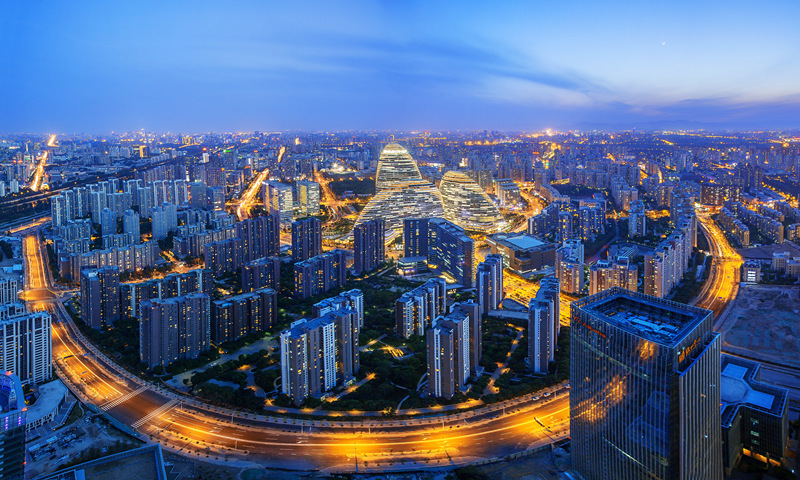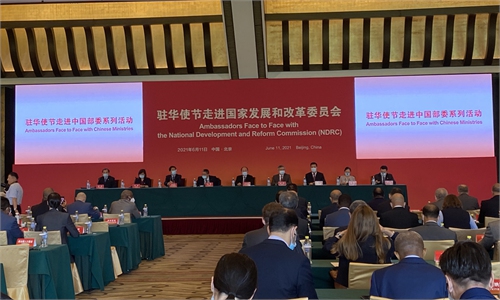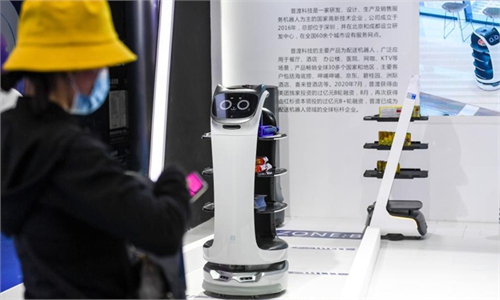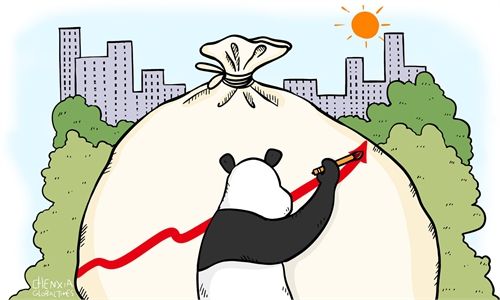COMMENTS / EXPERT ASSESSMENT
Tightening COVID prevention will not dampen China's economic growth

A view of Wangjing SOHO in Beijing Photo: VCG
After several cluster infections emerged in cities like Nanjing, Yangzhou and Zhangjiajie, China has swiftly tightened COVID-19 prevention measures, raising discussions on how the ramped-up prevention efforts would impact China's hard-won recovery. Some foreign media outlets did not forget to take the chance to question China's strict virus containment measures and hype a possible sharp slowdown of the Chinese economic recovery in the second half of the year.
Containment measures against the recent outbreaks are quite adequate and based on scientific approaches such as big data management. Contrary to what by some foreign media have suggested, China's economic growth prospects for the rest of the year are unlikely to be affected by the tightening of anti-pandemic efforts.
Based on what Chinese economy has achieved in the first half of the year, it is believed that there is no problem for the Chinese economy to maintain a growth rate of over 8 percent for 2021.
In the first six months, China's Gross Domestic Product reached 53.22 trillion yuan ($8.2 trillion), a 12.7-percent increase year-on-year, according to data from the National Bureau of Statistics (NBS). The figure puts the average H1 growth for the past two years at 5.3 percent.
From a detailed perspective, China reaped another bumper summer harvest in 2021, with summer grain output reaching a new record. Also, the overall condition of the autumn grain production remains promising.
According to NBS, China's summer grain output hit 145.82 million tons, up 2.1 percent from the previous year, creating a solid foundation to maintain a full-year grain output above 650 million tons.
In the meantime, industrial production remains smooth and stable with a rise of industrial output of 15.9 percent on a yearly basis over the first six months of this year. Latest data showed that the purchasing managers' index (PMI) for China's manufacturing sector recorded 50.4 in July, remaining above 50 and indicating expansion.
Under such circumstances, it is essential for the nation to put the virus spread under control and promote economic construction in the meantime. The Political Bureau of the Communist Party of China Central Committee recently held a meeting to analyze the current economic situation and make arrangements for economic work in the second half of the year.
Among a series of arrangements, the meeting vowed to continue efforts to deepen the supply-side structural reform, accelerate the building of a new development paradigm and advance China's high-quality development.
It underlined the acceleration of development of new energy vehicles (NEVs) and the ramping up of e-commerce and express delivery systems in counties and rural areas. It stressed the need to keep a prudent monetary policy to maintain reasonably sufficient liquidity and help small and medium-sized enterprises and industries in difficulty continue to recover. Also, the meeting reiterated the commitment to improve the country's industrial supply chains and to break through technology bottlenecks.
In the second half of the year, growth of high-tech industries is expected to be highlighted, including NEV and industrial robot sectors. With the economic structure continuing to be optimized, innovation is going to play an increasingly important role in driving up economic growth. The 14th Five-Year Plan (2021-25) has set an agenda to promote in-depth integration of digital technologies with the real economy.
This is the first year of the 14th Five-Year Plan and under the guidance of the arrangements, there is no problem for the nation to achieve all major targets set in the beginning of the year despite the continuing challenges.
The article was compiled based on an interview with Yao Jingyuan, former NBS chief economist. bizopinion@globaltimes.com.cn



